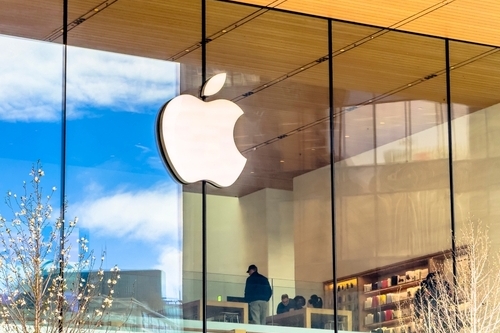First Commonwealth (FCF) Q2 EPS Up 36%

Key Points
Core diluted earnings per share were $0.38 for Q2 2025, beating analyst expectations by 35.7%.
Non-GAAP revenue fell short of estimates, coming in 53% lower than anticipated.
Loan growth and net interest margin both improved, but asset quality metrics weakened due to a specific commercial credit issue.
First Commonwealth Financial (NYSE:FCF), a regional bank serving Pennsylvania and Ohio, reported its second-quarter fiscal 2025 results on July 29, 2025. The company delivered non-GAAP earnings per share of $0.38, outpacing analyst estimates of $0.28 (non-GAAP), a 35.7% improvement. However, non-GAAP revenue was $58.68 million, well below the Street non-GAAP estimate of $125.88 million. Despite stronger net interest margin and solid loan book growth, the quarter was overshadowed by a significant jump in nonperforming loans following a specific commercial credit event. Overall, while operational and capital strength stood out, the period's results were mixed due to the revenue miss and asset quality setbacks.
| Metric | Q2 2025 | Q2 2025 Estimate | Q2 2024 | Y/Y Change |
|---|---|---|---|---|
| EPS (Non-GAAP) | $0.38 | $0.28 | $0.36 | 5.6% |
| Revenue (Non-GAAP) | $131.3 million | $125.88 million | $120.5 million | 9.0% |
| Core Return on Average Assets | 1.31 % | 1.27 % | 0.04 pp | |
| Net Interest Margin (FTE) | 3.83 % | 3.57 % | 0.26 pp | |
| Core Efficiency Ratio | 54.06 % | 53.63 % | 0.43 % | |
| Net Charge-offs as % of Average Loans | 0.12 % | 0.20 % | (0.08 pp) |
Source: Analyst estimates for the quarter provided by FactSet.
Company Overview and Strategic Priorities
The bank operates a network focused on consumer, commercial, mortgage, and equipment finance, supported by wealth management and insurance subsidiaries. Its main markets are Pennsylvania and Ohio, where it offers checking and savings accounts, loans, wealth management, and insurance through over 120 community branches.
Recently, the company has concentrated on expansion through strategic acquisitions and organic loan growth. Important drivers include managing credit risk, strengthening its capital base, maintaining regulatory compliance, and broadening its sources of fee income. Key factors for success remain disciplined underwriting, integration of acquired banks, and competitive positioning within its core regions.
Quarter Highlights: Growth Coupled with Credit Concerns
Loan growth accelerated, with total loans (net of acquisitions) up $183.7 million, or 8.1% annualized compared to the previous quarter. Commercial real estate and equipment finance portfolios saw the fastest expansion. For example, equipment finance loans jumped from $486 million last quarter to $574 million, and Commercial real estate loans grew to $3.37 billion at June 30, 2025, from $3.16 billion at March 31, 2025. This loan growth, combined with higher yields on new loans and disciplined funding costs, drove net interest margin, which measures the difference between interest income and interest expense relative to earning assets. Net interest margin was 3.83% in the second quarter of 2025, an increase of 0.21 percentage points from the previous quarter and 0.26 points from Q2 2024.
The company completed its acquisition of CenterBank, bringing in $45.9 million in new shareholders’ equity and new talent to the lending team. Management cited successful early integration and anticipation of improved mortgage and consumer lending opportunities, particularly in Ohio markets. The acquisition contributed 0.04 percentage points to the net interest margin thanks to accounting adjustments on loans and deposits acquired from CenterBank.
Noninterest income, which includes fees from services like mortgage origination, gain on loan sales, and insurance, was $24.7 million. While this was up $2.3 million from the prior quarter, it was slightly below the year-ago period, mainly due to lower card interchange revenue resulting from debit card fee caps (the Durbin amendment). Fee income from mortgage and Small Business Administration (SBA) loan sales increased quarter over quarter.
On expenses, noninterest expense (which includes salaries, occupancy, and operational costs) climbed to $76.3 million, up $5 million from last year. The workforce grew to 1,562 full-time equivalent employees, up from 1,538 in the previous quarter and 1,472 in the same period last year.
Asset Quality and Capital Position: Mixed Signals
While core earnings were strong, the quarter saw a sizable increase in nonperforming loans. These rose to $99.5 million from $59.4 million in the previous quarter, largely the result of a single commercial floorplan loan moved to nonaccrual status. This pushed nonperforming loans to 1.04% of total loans, compared to 0.65% last quarter and 0.63% a year ago. Criticized and classified loans—loans showing signs of credit risk—also increased significantly, indicating some broadening in credit weakness.
Despite these pressures, Net charge-offs, or loans written off as uncollectable, declined to $2.8 million (0.12% of average loans), marking a decrease from both the prior quarter (Q1 2025) and last year (Q2 2024). The bank significantly boosted its GAAP provision for credit losses, setting aside $8.9 million compared to $5.7 million in Q1 2025, in response to the higher nonperforming loan values. The allowance for credit losses covers 1.39% of total loans, up from 1.32% in the earlier quarter.
The bank’s capital ratios remain robust and well above regulatory minimums. At quarter end, the total capital ratio stood at 14.4% versus a required minimum of 10% as of June 30, 2025. The Common Equity Tier 1 (CET1) ratio, which tests the bank’s ability to withstand losses, was 12.0% as of June 30, 2025. Tangible book value per share, which values the bank's equity minus intangible assets, reached $10.63, up 7.3% annualized versus the earlier quarter.
A higher loan-to-deposit ratio of 95.1%, up from 92.6% last quarter, reflects loan growth outstripping deposit gathering, a trend that could pressure funding if deposits stagnate. End-of-period deposits dipped slightly, but average deposits excluding the acquisition rose.
The board authorized a 3.7% increase in the quarterly dividend, declared a $0.135 per share dividend, and approved a new $25 million share buyback program. The annualized dividend yield stands at 3.3% on recent share prices as of July 28, 2025.
Products and Fee Income Initiatives
The bank’s core business lines include standard consumer banking, commercial lending, insurance products, wealth management, and equipment finance. Fee-based services are an increasingly important focus as management aims to reduce reliance on traditional net interest income. For example, commercial loans and real estate lending continued to expand this quarter as part of the bank’s strategy to gain scale and improve earnings stability.
Card-related fee revenue contracted due to full application of the Durbin amendment, a federal rule that limits certain debit card fees for banks above $10 billion in total assets. Mortgage-related gains and SBA loan sales, however, offset part of this decline. Management said Efforts to improve fee generation are ongoing and remain a core priority.
Looking Ahead: Outlook and Investor Focus
The company did not provide updated financial guidance for the rest of fiscal 2025. Previous commentary suggested the net interest margin could further expand by approximately 0.10 percentage points by year end 2025, assuming few changes in deposit costs or Federal Reserve rates. Targets for loan growth remain in the mid-single-digit percentage range, as reiterated by management.
Investors should watch evolving asset quality metrics, especially any further movement in criticized or nonperforming loan balances, as credit risk surfaced this quarter after a period of stability. The integration of the CenterBank acquisition remains a focus area, with management expecting it to add to per-share earnings from 2026. The newly authorized share repurchase and steady dividend growth highlight the bank's strong capital position, but trends in fee income, loan-to-deposit ratio, and capital deployment will be critical in the coming quarters.
The quarterly dividend was raised to $0.135 per share, a 3.9% increase from the prior year.
Revenue and net income presented using U.S. generally accepted accounting principles (GAAP) unless otherwise noted.
Where to invest $1,000 right now
When our analyst team has a stock tip, it can pay to listen. After all, Stock Advisor’s total average return is 1,039%* — a market-crushing outperformance compared to 182% for the S&P 500.
They just revealed what they believe are the 10 best stocks for investors to buy right now, available when you join Stock Advisor.
*Stock Advisor returns as of July 29, 2025
JesterAI is a Foolish AI, based on a variety of Large Language Models (LLMs) and proprietary Motley Fool systems. All articles published by JesterAI are reviewed by our editorial team, and The Motley Fool takes ultimate responsibility for the content of this article. JesterAI cannot own stocks and so it has no positions in any stocks mentioned. The Motley Fool has no position in any of the stocks mentioned. The Motley Fool has a disclosure policy.




